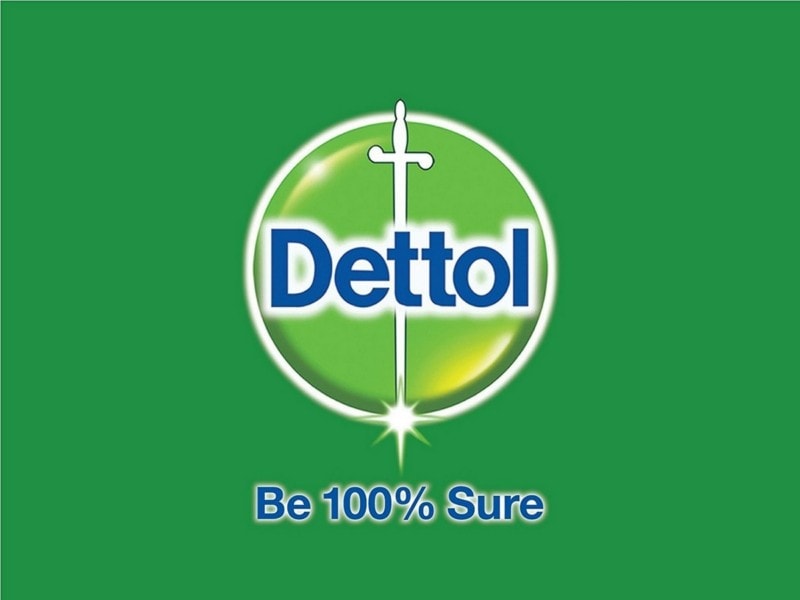The factors or features of services and products which are a cornerstone in establishing the differentiation for them is called a point of difference. Here differentiation refers to the way in which the products or services are different from their respective competitors. Point of parity on the other hand or the associations which may not be necessarily exclusive to the particular brand but may also be shared by other competitive brands.
The objective in point of parity is to match the competitor who claims to have the best feature. Point of parity may not be the only reason that people choose a particular brand but people definitely do not choose the brand when it does not have the said point of parity feature.
Both the concepts are somewhat equal and opposite to each other.
Table of Contents
What are Point of Parity?
It is usually industry-specific to identify the points of differentiation and points of parity. Points of Parity are the elements that are essential for a brand to be considered as a full-fledged competitor in that particular category.
How do brands differentiate themselves in competitive markets?
Quick statistics from a recent survey by Nielsen indicate that in 2022, 80% of consumers attribute significant importance to a brand’s unique selling points (USPs), directly impacting their purchasing decisions. In contrast, only 20% felt that similar brand offerings met their needs satisfactorily. This data underscores the critical role of differentiation in influencing consumer choice in today’s market landscape.
Brands looking to innovate and identify their points of difference can consider tools like “SpyFu” and “SEMrush” for competitive analysis. These platforms provide detailed insights into competitors’ strategies, including their key differentiators, allowing brands to adapt and refine their own unique features. Leveraging such tools can offer a competitive edge in crafting compelling and distinct brand narratives.
This is the final decision maker which makes the customer purchase the brand over the competitors. The idea here is not to best or beat the competitor but to complete alongside the best. Points of parity are the primary points in which you can compete with your competitor and try to stay in the race.
For this, you have to identify what are the primary features that make people choose the competitor brand over the other brands.
Here is an example
Recently there is been a launch of iPhone 11 and 11 Pro, 11 Pro Max from Apple. The primary new features with these phones are the telephoto lens and a wide-angle camera along with 12-megapixel primary camera. Now if other phones want to compete with iPhone they will have to include a 12-megapixel camera that is not patented by apple.
On the other hand, wide-angle camera and telephoto lens maybe in patent with Apple and possibly could not be replicated by competitors which is why I could offer other features such as HDR photos or an enhanced portrait mode or wide-angle selfie which result is similar to the primary feature of iPhones but do not exactly copy them.
Point of difference is an entirely different concept altogether as compared to the point of parity. This is a unique feature providing a competitive advantage that no other product gives you and has an edge over the competitors. Taking the example about the iPhone 11 Pro will have an exclusive feature of wide-angle cameras which will be a point of difference for iPhone over the other mobiles.
This feature cannot be replicated by any other company and forms the unique selling point for Apple’s brand of iPhone 11 pro.
Similar to Apple iPhone 11 pro, Samsung S10 Note also has a triple camera but it is not placed or designed like iPhone which is why this becomes a point of parity between both. But including a stylus is a point of differentiation of Samsung, while High-key Light Mono effect in photos is a point of differentiation of Apple.
The PoP – PoD trade-off
One of the primary decisions that the firm has to make while launching a product is the extent to which they would differentiate the product. A proper mix of point of difference and point of parity is essential for a successful product.
If a product is with excessively different features or is loaded with high points of difference then it may not complete and stand odd amongst all the competitors. The point of difference should be distinct enough to differentiate itself from the competitors but should be equally appealing, sensitive and catchy for the customers to feel the need for the difference.
If the customer does not feel the need for the difference then there is no point in having the point of difference.
On similar lines if there are too many points of parities then it will appeal the customers who would settle for a second option, or for cost-conscious customers. The product or the service will lack originality if everything about it is a point of parity and it will lose appeal for many customers.
Therefore the aim of every from should be to strike a balance between the point of difference and point of parity.
When to use points of difference and When to use PoP?
The firms need to understand when to use a point of parity and difference and at what situation which one be emphasized. The following are a few of the situations and what could the forms emphasize in that particular situation.
- If the company is a market leader then in order to maintain the position of market leader the brand of the product of the company should be seen as superior and the company should focus on the points of difference.
- If the competitor is a laggard or a me-too type company, then in order to survive the market the competitive should emphasize on points of parity.
- When the market is mature and established and the new company enters it, then the likelihood of customer conversion is very low because of the habitual loyalty of the customer to the existing products or services. In this case, the organization should prefer to highlight points of difference in order to break the loyalties of the customers.
- When the market is price sensitive, then the organization should focus on providing more benefits in order to justify the pricing so that the customer does not focus on the price but rather on the features or the customers are to be introduced with cheaper alternatives which may or may not be a substitute of the original. In this case, points of differentiation type of positioning would be a logical move by the firms.
- When the market is very fast growing and the organization is also growing along with it then in order to meet the primary demand of the market points of parity should be the focus to capture new customers.
- When a firm is a conglomerate offering multiple products in the target market then points of difference should be the focus of organization in order in order to reduce cannibalization of products because if the firm does not focus on point of difference then there will definitely be cannibalization by cheaper substitute or a star type product (according to BCG Matrix) with other products. This would not give an opportunity for other products of the firm to grow.
- When the organization focuses on a narrow market segment and there is a lot of diversity in consumer needs and demands then the positioning strategy should be of point of difference so that a reasonable market share can be generated by the company.
Advantages of Points of Difference
- Product differentiation invites innovation for products that would draw public attention to new products or services which will allow the business to survive in a global and competitive market and give cutting-edge features to the customers.
- The differentiated product generates larger revenue as compared to any other type of product going to the fact of innovation which can be patented.
- Product differentiation, if liked by customers, would command brand loyalty which would mean fixed business for the organization.
- The differentiated services or products have a better user experience which is why the customer retention increasing significantly in the case of differentiated products.
- As long as the innovation continues and the point of differentiation increases repeat business from regular customers can be assured for your organization and it should only focus on acquiring new customers.
Disadvantages of Points of Difference
- Developing an innovation requires high cost and a lot of time which may not be possible with every firm.
- Huge research and development expenses are to be incurred by the organization in order to accomplish the innovation within time. These costs also include the costs of scrapping research if it doesn’t work.
- Until a proper and unique point of differentiation is developed the product cannot be launched which will be an opportunity cost for the organization.
- Maintaining the differentiation is an entirely different story. As soon as the product is launched into the market replicas and competitors try to imitate the features of the product of the service and eat up a lot of revenue.
Advantages
- The point of parity strategy would be the easiest in order to keep up with the market leaders and generate enough business for the firm to survive.
- The product of the service which follows the point of parity offers the basic features all the features which are close enough to the ones that are expected by the customers which will be appealing to the cost-conscious market.
- Price is an advantage with the firm’s having a point of parity because that does not invest in research and development cost which is why their primary product cost is lower and have lower margins. Thus the customer gets a price advantage.
Disadvantages
- The point of parity is not a long term strategy but the short term in order to survive in the competition. Sooner or later the firm has to shift to the point of differentiation strategy and develop its own products which would have a unique selling proposition and which provides over the competitors.
- The customers who would want the unique features would not go for the products which are a substitute for the originals.
- The point of parity strategy would be difficult to survive in a developed market.
Examples of points of parity vs points of difference
Following are some of the examples of points of parity vs points of difference
1. IOS
iOS is perhaps the most innovative and unique operating system designed by Apple for its mobile phones. It was an entirely different that form compared to the majority users Android and is exclusively available only on iPhones.
That not be any user iterations in the iOS which is not the case with Android. Android offers user customization but Apple’s iOS does not and the security levels of apple’s iOS are far more strong than the security of Android.
So far in terms of user interface iOS is performing much better as compared to Android and combined with the flagship products of iPhone they give an extensive smoothness and user-friendly features.
2. Domino’s
Domino’s was the first food outlet to come up with a 30-minute delivery challenge on a global scale. They came up with the tagline of delivery in 30 minutes or the order would be free.
This attracted a lot of customers to take up the challenge and order the pizza which generated huge revenue for Domino’s making in the market leader in the pizza chain.
Examples
1. Dettol
Dettol is the widest selling antiseptic liquid that came into the market a long time back and following it many other competitors introduced their products on similar lines but one that stood out and is completing equally with Dettol is Savlon.
Savlon has maintained equal consistency and look and feel of Dettol but has few differences like the difference in the odor and packaging. The primary function of both of the liquids remains the same which is providing antiseptic and cleanliness.
2. Mcdonald’s
Mcdonald’s begin losing it customers to healthy eating habits which is why they introduced a variety of salads along with grilled chicken sandwiches and fruit smoothies which would help them to position themselves as the food items with reduced bad fat.
The goal was to reduce the point of parity enough to increase the customers but not to establish themselves as a healthy eating segment like Subway.
The same thing happened when Starbucks went on rising and the breakfast items of Mcdonald’s getting sold lower and lower. This is when McDonald’s introduced McCafe in 2007. The goal was not to compete or beat Starbucks but to be equal or close enough to the Starbucks experience.
Liked this post? Check out the complete series on Marketing




so in your opinion , would FMCG company largely skew towards Points of difference rather than point of parity to sell / position their products.